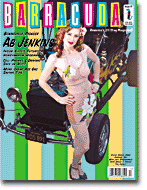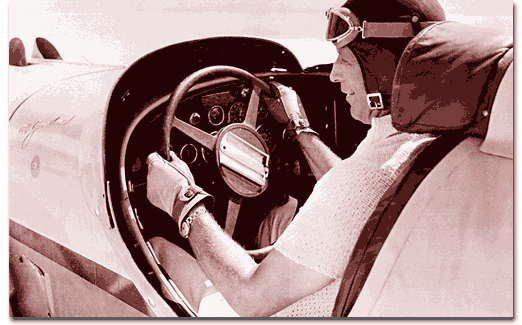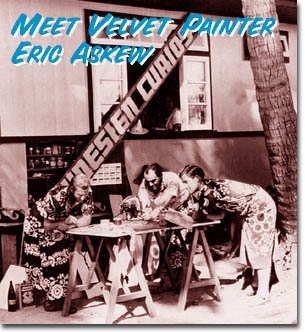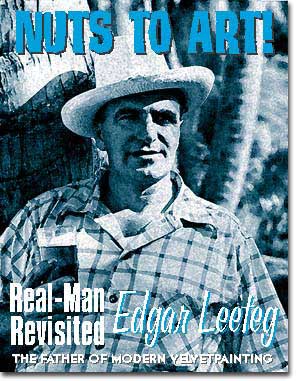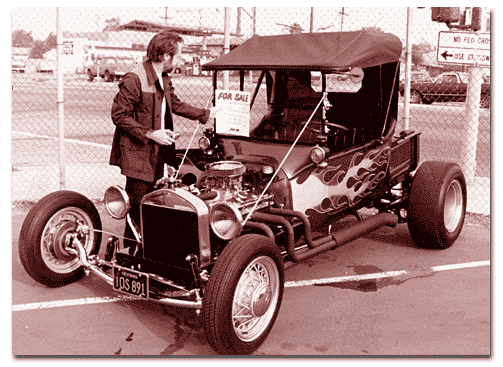
Meet Jeff Wasserman
Jeff Wasserman was born in 1943 and grew up in Southern California. Like so many other youngsters of the late ’50s and early ’60s, Wasserman got bit by the car bug during his teenage years and set out to build a hot rod in the garage of his parents.
In 1961, while still in high school, he started creating the car of his dreams. Wasserman’s concept for his hot rod took design cues from two very famous hot rodders — Norm Grabowski and Tommy Ivo. Grabowski has been called “Father of the T-bucket” and is best known for his “Kookie” car, which was made out of the front half of a touring car with a severely shortened pickup bed on the back. The car was wildly famous, as it was featured on the TV series 77 Sunset Strip, and on the cover of many hot rod magazines of the day. “T.V. Tommy” Ivo’s T-bucket was built in the 1950s and had been on the cover of Hot Rod and Car Craft and had won Top Eliminator titles at early drag races in Southern California.
Although he had never even changed a spark plug when he started the project, Wasserman decided he wanted to build a car from scratch, rather than taking someone else’s car apart and modifying it. At a local gas station, he noticed a hot rod like the one he wanted to build. It was owned by one of the guys who worked there, George Boehme. Wasserman introduced himself and asked about the car. He got all the information and tips he could from Boehme and the two became fast friends.
His Model T hot rod was finished in November of 1963. He completely hand-built, painted, upholstered and pinstriped the car himself. The frame was built with all hand-made cross-members. It was powered by 1963 fuel-injected Corvette 327, fresh out of the crate. The engine was connected to a Chevy 4-speed transmission. The body featured original 1915 Model T cowl lights (with the original wicks in them) and wings for the motor meter, which Wasserman had picked up at the very first Pomona swap meet in 1961.
Wasserman and his pal George Boehme nicknamed their similar cars The Insult and The Outrage. They showed them together at the L.A. Roadster show and cruised many cities in Southern California together. “I drove the hell out of that car,” says Wasserman, who even ran it as a daily driver for a month.
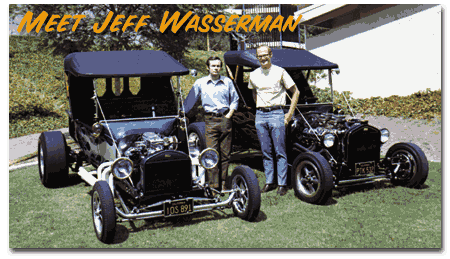 Wasserman (left) and his friend George Boehme (right) with their twin Ts, The Insult and The Outrage in 1968. They had struck up a life-long friendship b.s.-ing about hot rods.
Wasserman (left) and his friend George Boehme (right) with their twin Ts, The Insult and The Outrage in 1968. They had struck up a life-long friendship b.s.-ing about hot rods.
Eventually, Wasserman was engaged to be married. Since his fiancee had children, owning a two-seater hot rod didn’t seem too practical. Plus, he continued to build hot rods and collect classic cars, so he was running short on garage space. He decided to put The Insult up for sale. He took it to swap meets with a “for sale” sign on it. He found it tough to sell the car back then because most people were interested in ’32 roadsters. But, he eventually traded the car out for work on the building that housed his company.

Wasserman would build two more hot rods over the years — a highly modified ’34 three-window coupe and a red ’34 roadster which he calls his “very favorite car in the entire world.” He also bought an immaculate, stock ’34 Deluxe Tudor sedan with 26,000 miles on it, a ’65 Malibu SS and his daily driver is a ’65 Chevelle two-door wagon.
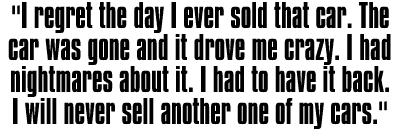
Despite the fact that he had built and owned so many other cool cars, he missed The Insult like a long-lost child. “The car was gone and it drove me crazy,” says Wasserman, “I had nightmares about it. I regret the day I ever sold that car. I had to have it back.”
After years of being out of his possession, Wasserman saw The Insult at a Throttlers picnic–and it was for sale! It had been modified to some extent. Its silver, blue and green flames had been painted with yellow and red flames and some more pinstriping had been done on it. Almost 60 lbs. of polished brass and stainless steel had been added. But it was still The Insult, the first hot rod he had ever built.
Unfortunately, Wasserman and the new owner could not agree on a price. The Insult wound up being sold to someone else and Wasserman had no idea of its whereabouts. Amazingly, two years later, he saw the car at another picnic, sitting under a tree. He waited by the car until the owner showed up. Wasserman explained the history of the car and said he wanted to buy the car back. The owner took his information and said if he ever wanted to sell it, he’d give him a call.
In 1996, the owner called Wasserman and sold The Insult back to him. On his way to bring The Insult back home, something seemed wrong with the car and Wasserman chose to take surface streets instead of the freeway. He didn’t get more than a few blocks when a front wheel bearing seized up and the car had to be brought the rest of the way home on a flatbed. Wasserman insists that the car would have flipped over and killed him if the bearing had locked up at freeway speed. “Now the car is right where it belongs,” he says, “In my little garage.”
Although Wasserman jokingly calls his obsession with cars “a serious sickness,” it can’t be all bad. His love for hot rods made him many life-long friends and helped him start his own business in a roundabout way. While in college, Wasserman saw guys making money doing flaming and striping on cars in parking lots and simply thought that would be a “really neat way to make money.”
He started doing lettering on race cars for extra cash. Then he got some office space from a friend for $30 a month and opened his own sign painting business. Someone came in and asked if he did silkscreen printing for t-shirts. “Sure,” he replied confidently. He took half of the man’s money as a down payment on the job, despite the fact that he didn’t actually know the first thing about screen printing. He figured out what he needed to know about silkscreening from a clerk at the art supply store where he went to buy the screens for the job. The order was filled and Wasserman was on his way to opening his own screen printing business.
In 1967, a fine art printing shop out-sourced some of the printing for a Robert Rauschenberg print to Wasserman. Later, he worked on two runs of prints by Roy Lichtenstein. From 1970 through 1975, he closed up his own shop and went to work for the company that had out-sourced him the Rauschenberg jobs. For those five years, Wasserman printed blue chip art, including works by Andy Warhol and Frank Stella. One Stella job, Double Gray Scramble, consisted of 150 colors. It took three years to proof and seven months to print. Wasserman had come a long way from bluffing his way through his first t-shirt printing job.
In 1976, he reopened Wasserman Screen Printing in Santa Monica. Since that time, he has done fine art printing for everyone from the likes of uptown artists Ed Ruscha and Patrick Nagel to lowbrow kingpins Ed Roth and Robert Williams.
Just as being around cars originally led Wasserman to open his fine art printing business, his art printing is leading back to being around cars. He has plans to divide the shop of Wasserman Screen Printing in half. He wants to make part of it into a garage where he will do traditional automotive upholstery, flaming and pinstriping.
When asked if this new business venture is basically an excuse to buy a lift, Wasserman frankly replies, “Yes.”
Today, Wasserman belongs to the “Old Timers” car club. There’s no president, no treasurer and no dues. “It’s just the same old guys sitting around a parking lot telling the same lies they’ve been telling for years,” says Wasserman. “I work on cars because I like it. I make art for other people during the day. When I come home, I make these cars for myself. I’m not a mechanic. I only know my own cars and that’s all I’m really interested in.”
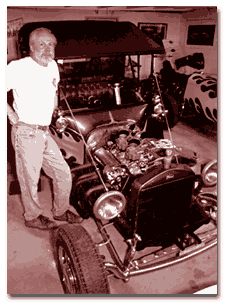
The Insult, back in Wasserman’s garage, 40 years after he started building it.
From the print edition of Barracuda #11.
